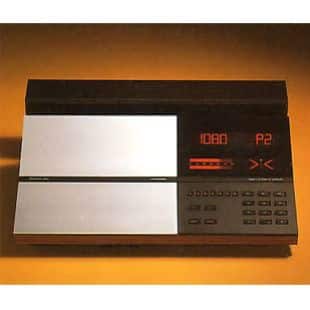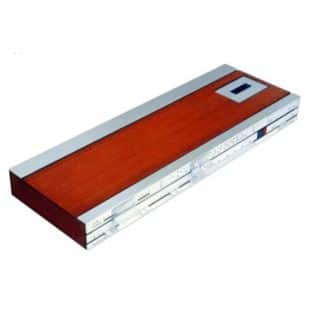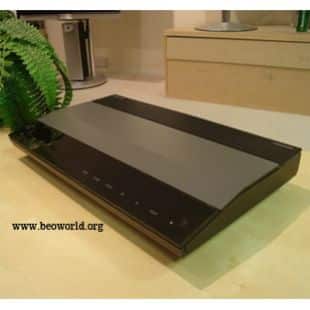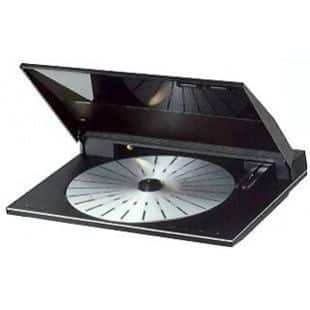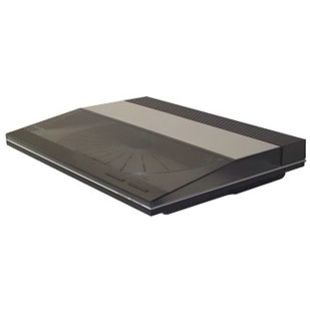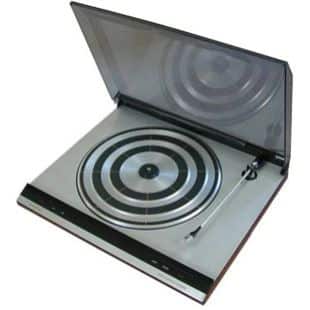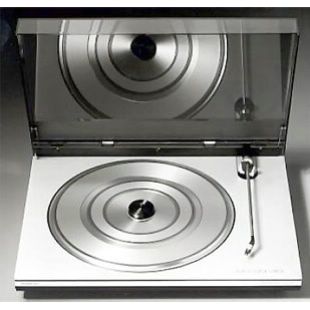BeoMaster 8000
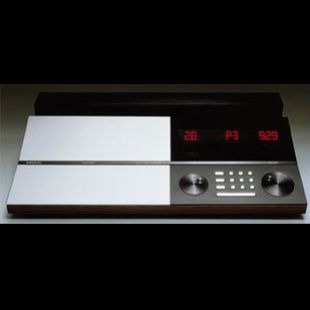
Beomaster 8000 was an advanced FM receiver with a rated output of 2 x 150 watts IHF A-202. It had the power, precision and overall performance to reproduce all types of music with the utmost fidelity.
The radio section united the principle of the modern digital frequency synthesizer tuner with a precise, automatic fine-tuning system to give unparalleled accuracy and long-term stability of reception. The set’s control panel gave instant access to all sound sources – an associated record deck and two tape decks and any of 9 user-programmable FM stations. The visual feedback indicated which sources were playing and their volume settings. Controls for secondary functions were protected beneath a hinged lid.
The infra-red BeoLab Terminal was for its time, complex technology tamed. It gave easy, direct access to music and allowed the control of a musical experience from anywhere in your room and operate Beogram 8002 and Beocord 8004 if these were part of your system. A single touch is all there was between what you wanted and the fulfilment of your wish. Radio programmes, cassettes and records were all available at the touch of a button.
In the early 1980s the technical quality of records, tapes and FM transmissions was vastly improved. Improvement meant increased dynamic range.
Increased dynamic range in sound sources makes great demands on hi-fi components. They must accommodate a greater range of tones: from the very faintest tinkle of a triangle to the loudest roll of the bass drum; and reproduce each tone accurately. This requires powerful, serious hi-fi components. Power to accommodate the dynamics, and accuracy to ensure that the fundamentals and harmonics of each tone are reproduced faithfully, i.e. with the intervals and relative intensity that gives each instrument its characteristic quality.
The 2 x 150 watts RMS Beomaster 8000 high fidelity FM receiver had the power, precision and overall performance level to help you achieve this goal. Up to the time of its introduction, it was Bang & Olufsen’s most accomplished receiver to date. During its construction phase, the company focused on one major goal: that none of its circuits or components should be able to limit or distort the sound signals it received before the amplifier’s power output level was exhausted.
In accordance with this, a special circuit registered, and the “clipping” function indicated when you should regulate volume level, if you wanted to ensure continued undistorted sound. Volume was controlled by a 60-step electronic attenuator. This regulated both channels together, in balance, and allowed precise adjustments.
A digital frequency synthesizer tuner was incorporated. It was a further development of other constructions since this tuner locked stations onto their actual transmission frequencies, rather than using a mere internally-generated frequency reference.
Beomaster 8000 had the most comprehensive user-programmable facilities imaginable. They were placed out of view in the programming compartment because you didn’t need to use them every day. The primary controls were external. To keep you informed, whenever the music system was in use, the status of the primary settings was displayed on the Beomaster’s large communication panel. Beomaster 8000 formed the heart of the Beosystem 8000.


